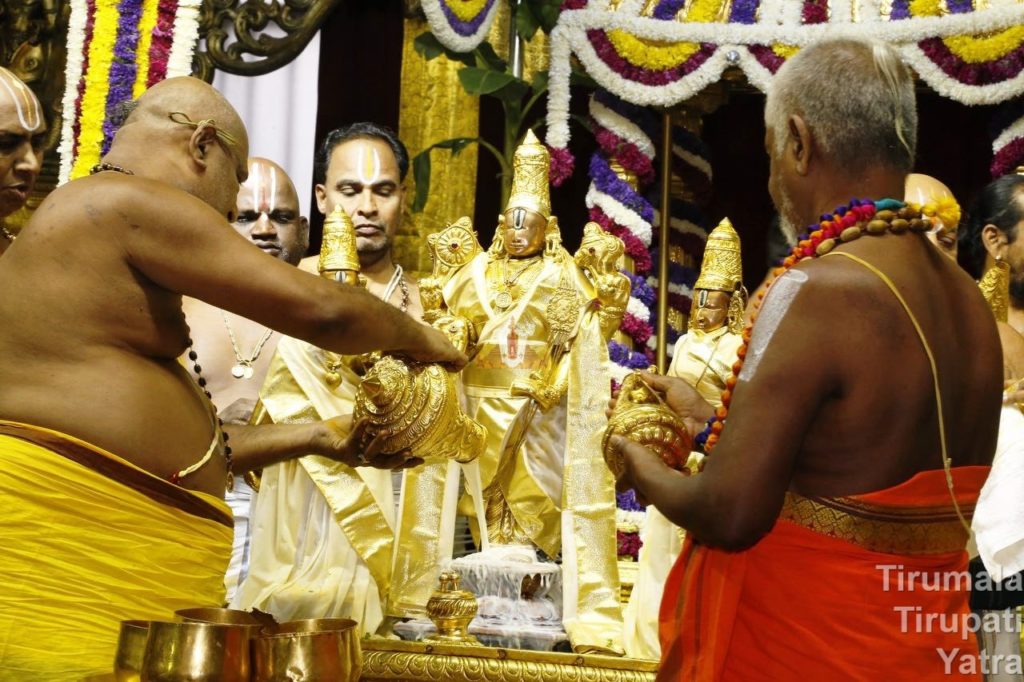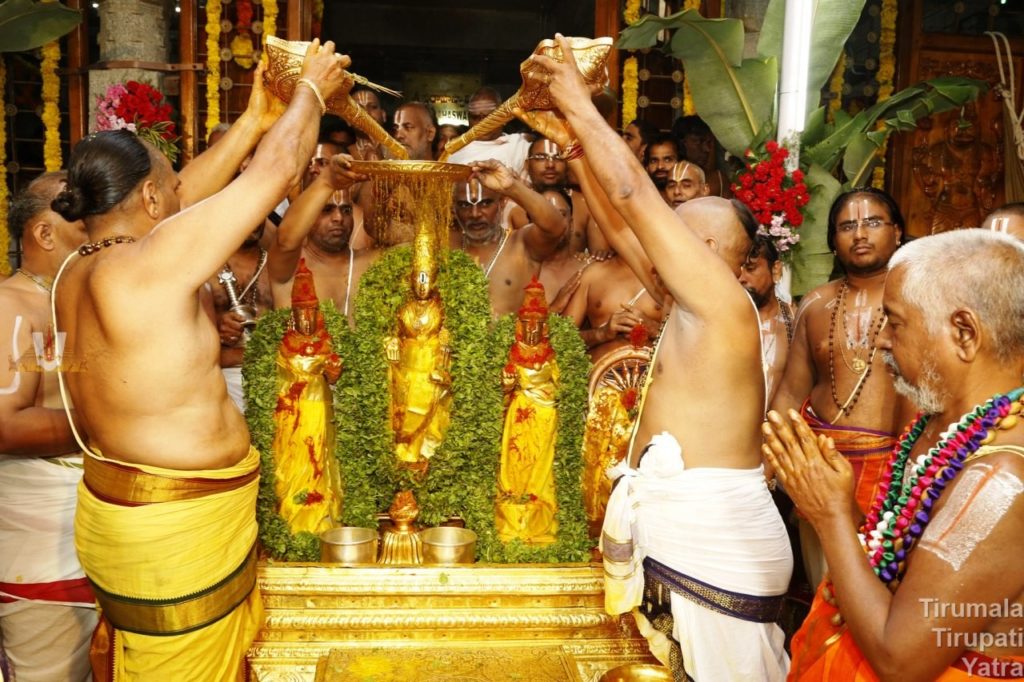Reason for Pavitrotsavams As per the Vedic tradition, one is not supposed to enter the temple with jatashoucham (impurity due to the birth of offspring) and mrithashoucham (impurity due to death of close relatives). But sometimes, this rule is violated knowingly or unknowingly by the tourists and staff. The purification ceremony to dispel the evil of Read More
Tag: Pavitrotsavams
Pavitrotsavams is a purificatory festival conducted on Sravana Shuddha Dasami day. The festival lasts for four days.
Reason for Pavitrotsavams
To Protect Devotees from Evil Lord Srinivasa of Tirumala is the incarnation of Lord Vishnu. He descended from Vaikuntam to Earth to protect his devotees from all sins and evils of Kaliyuga. The sevas and poojas are being performed as per the Vaikhanasa Agama Sastras. Vaikhanasa Agama The sacred Vaikhanasa texts prescribe the pavitrotsavams must Read More


